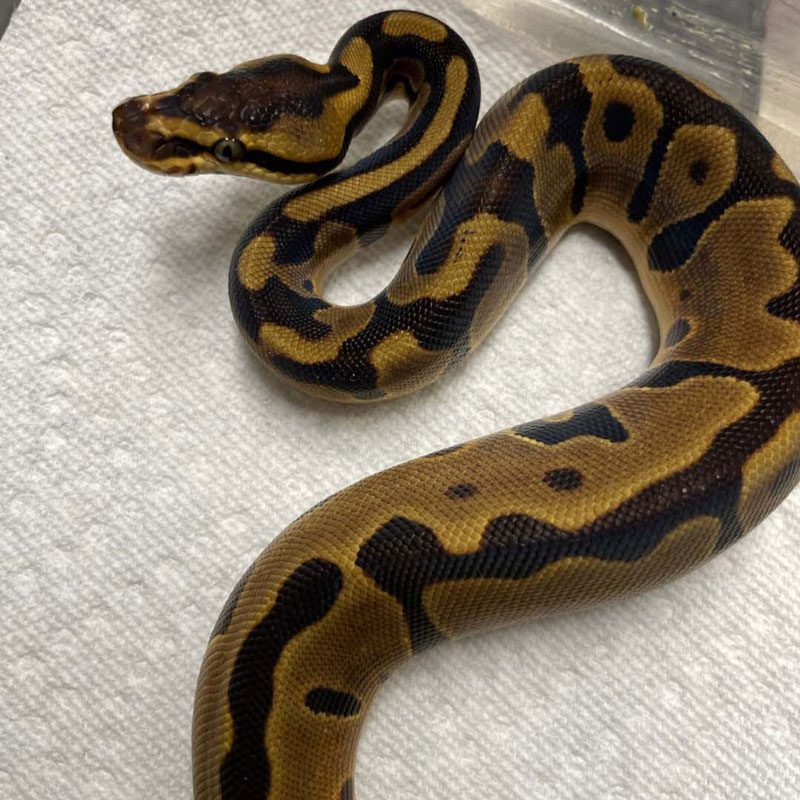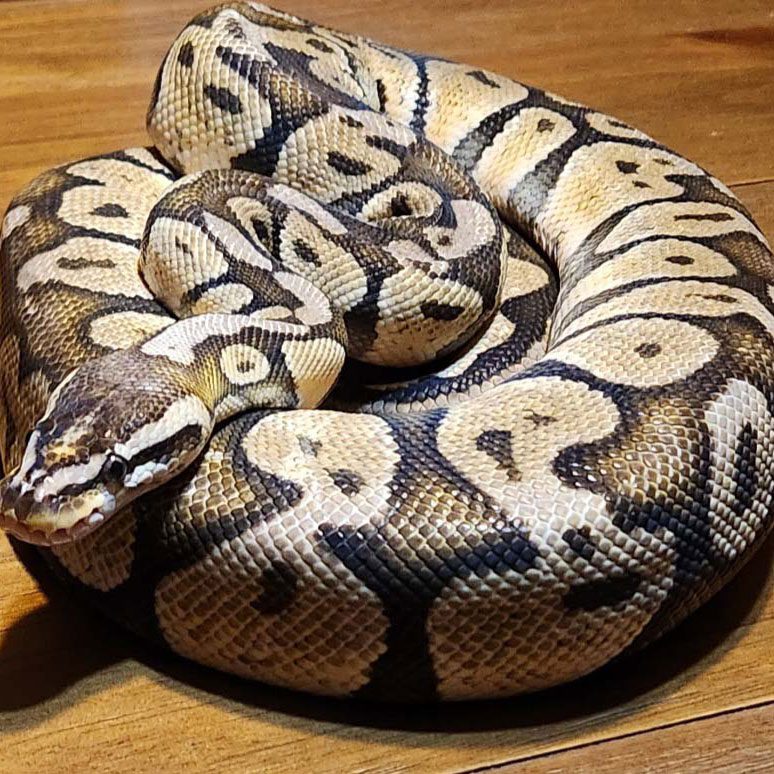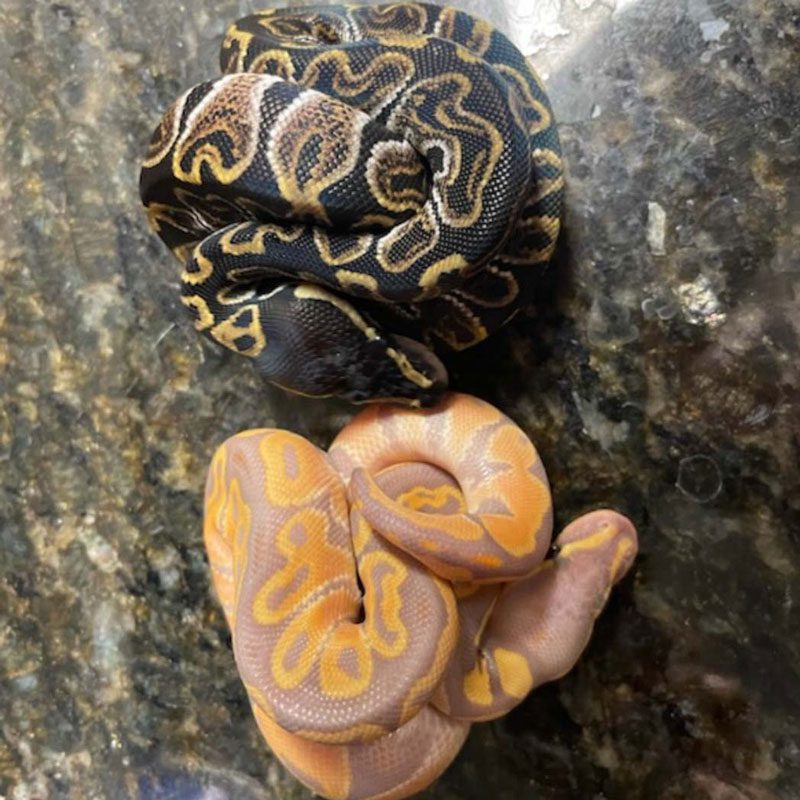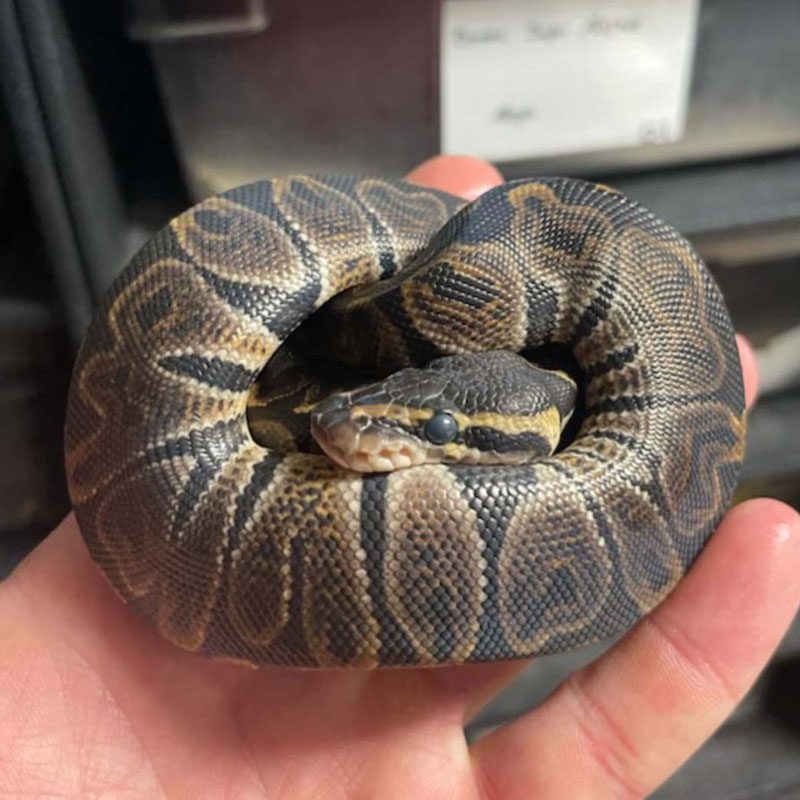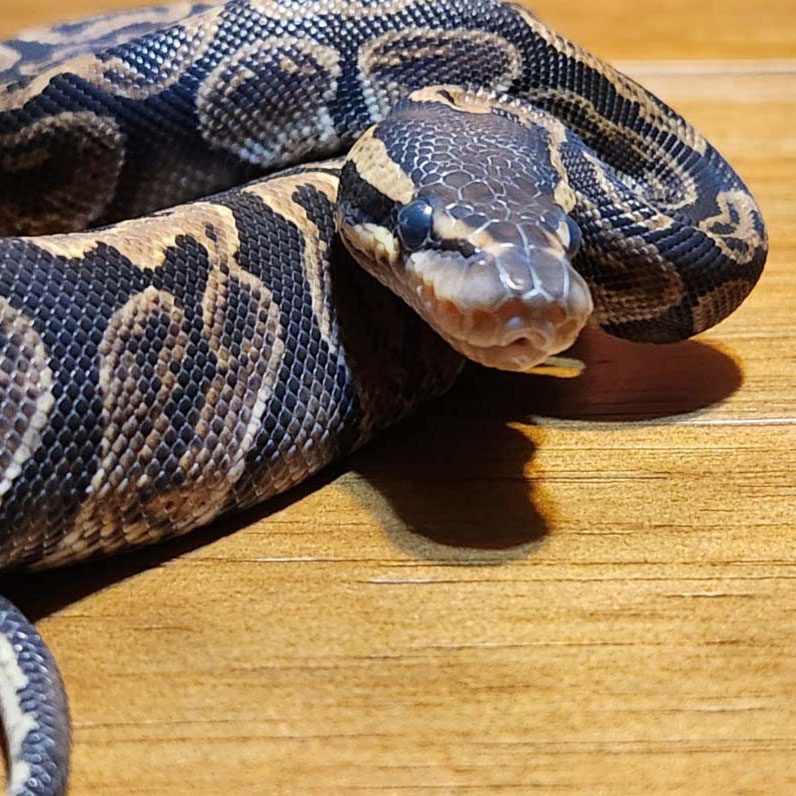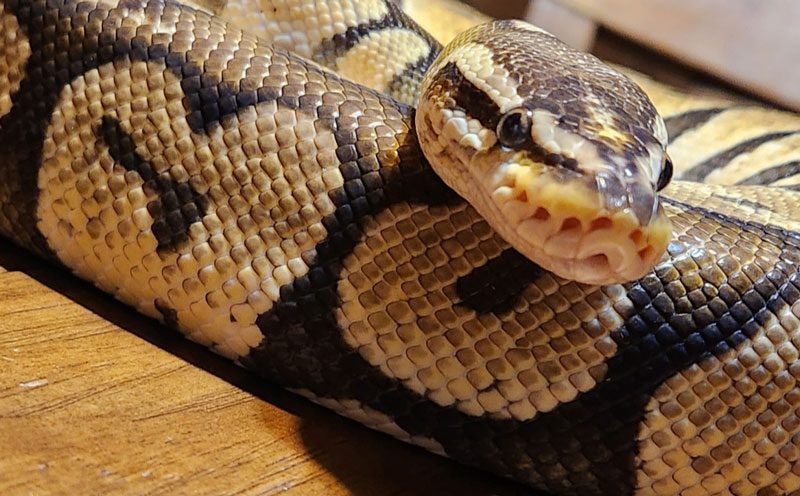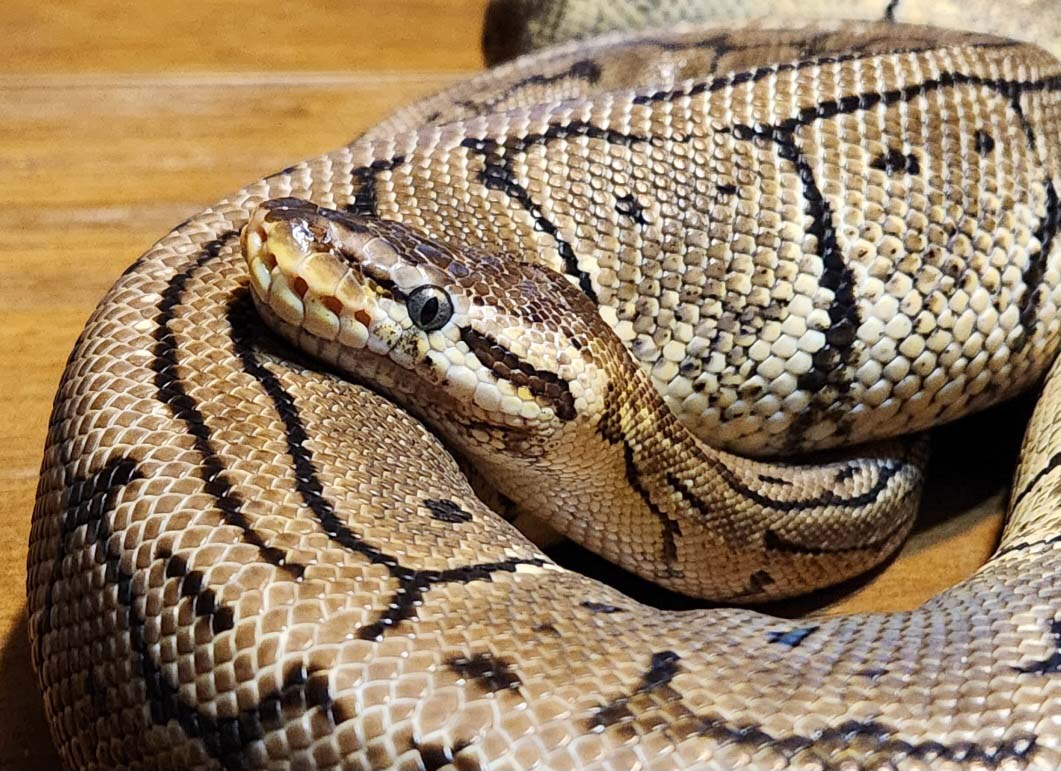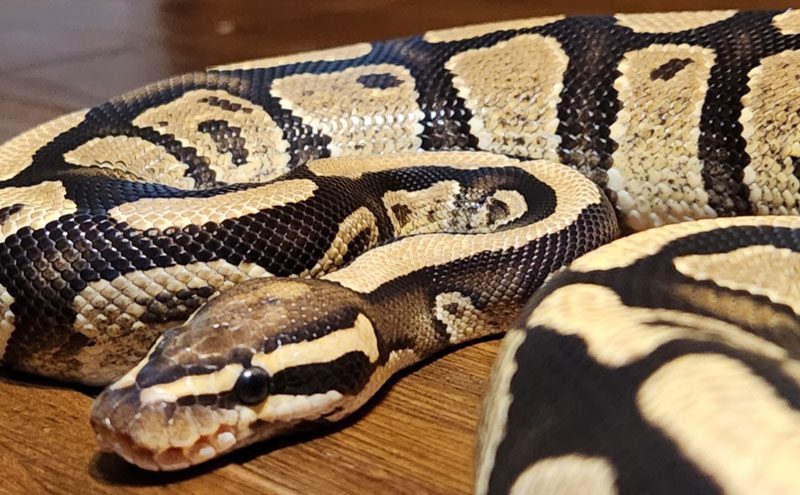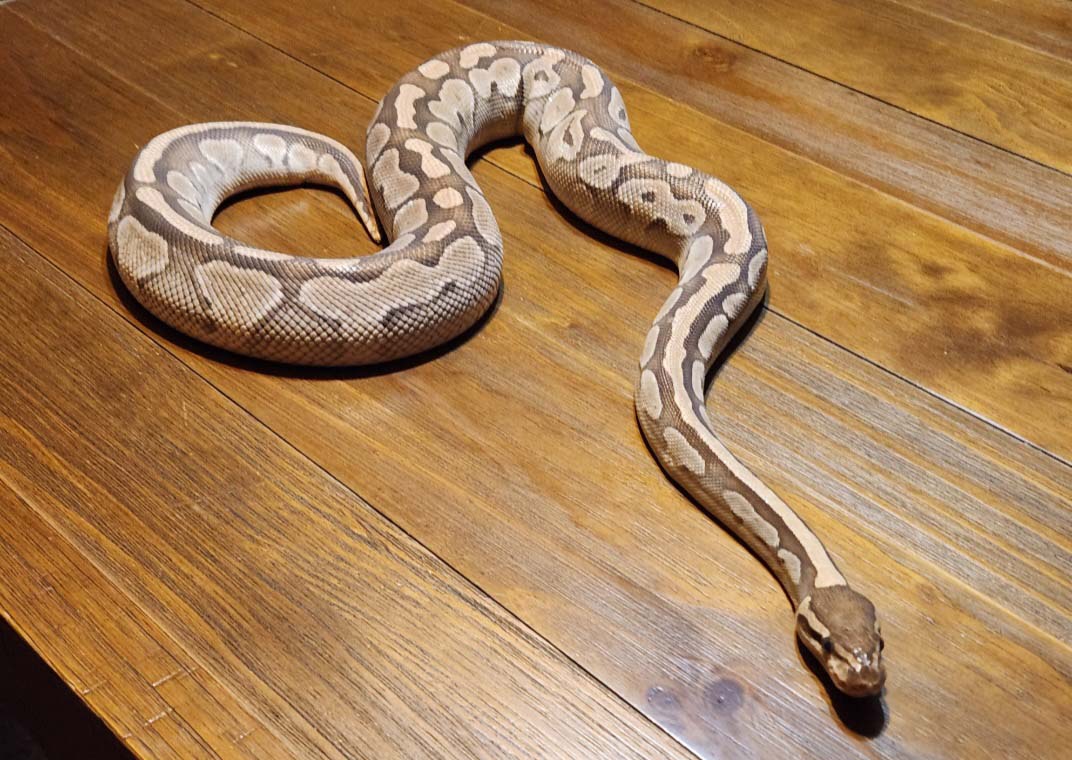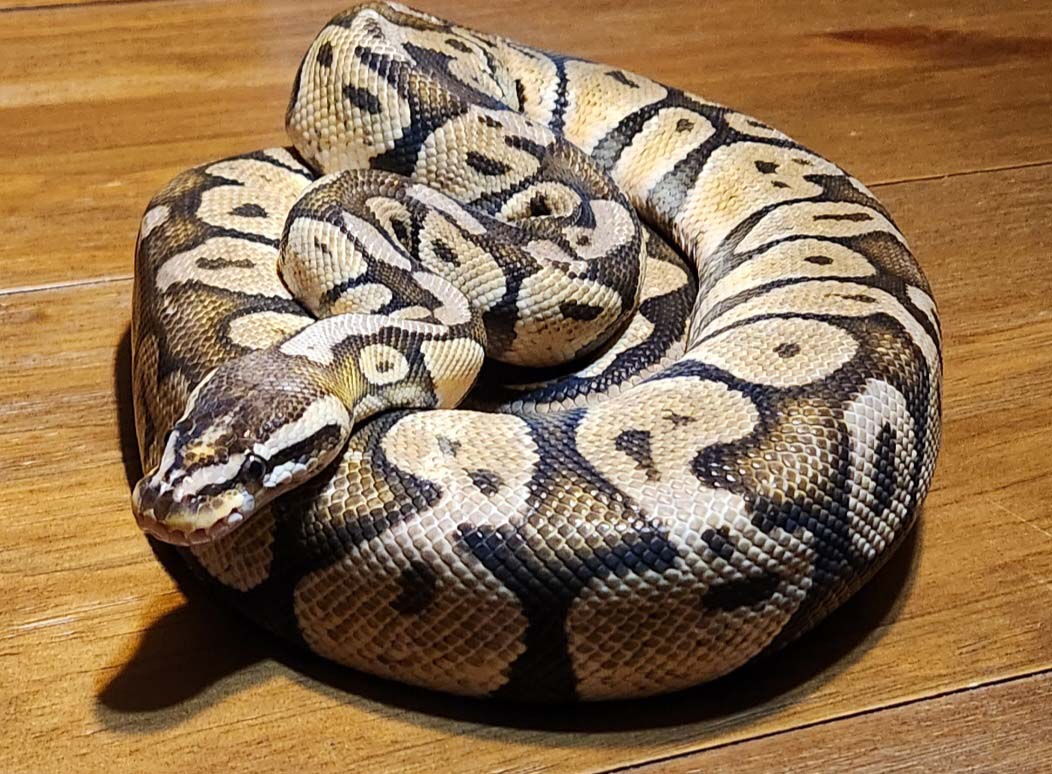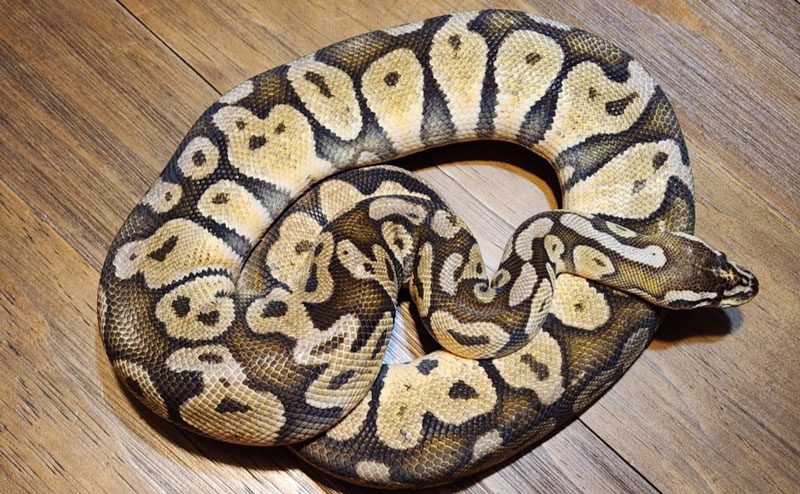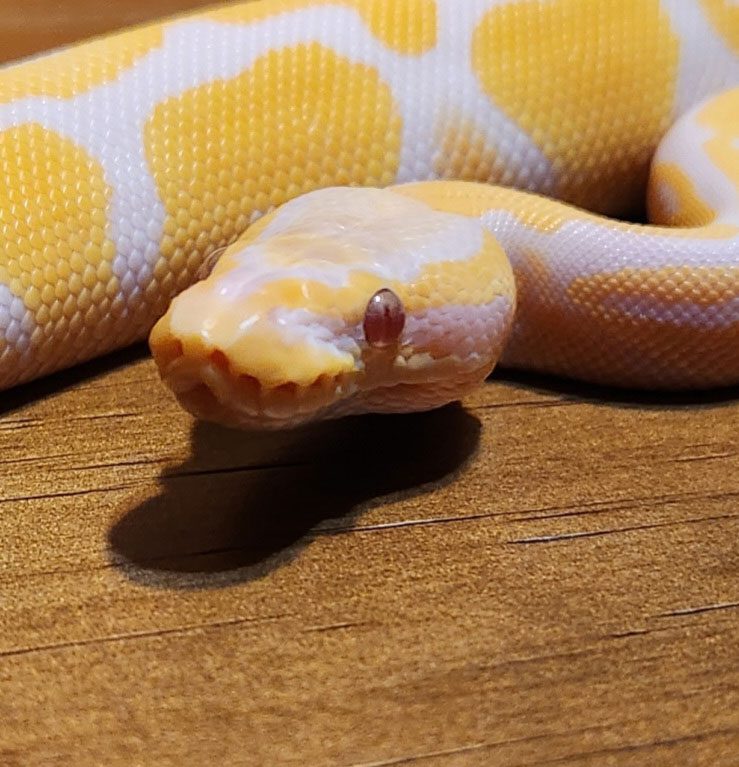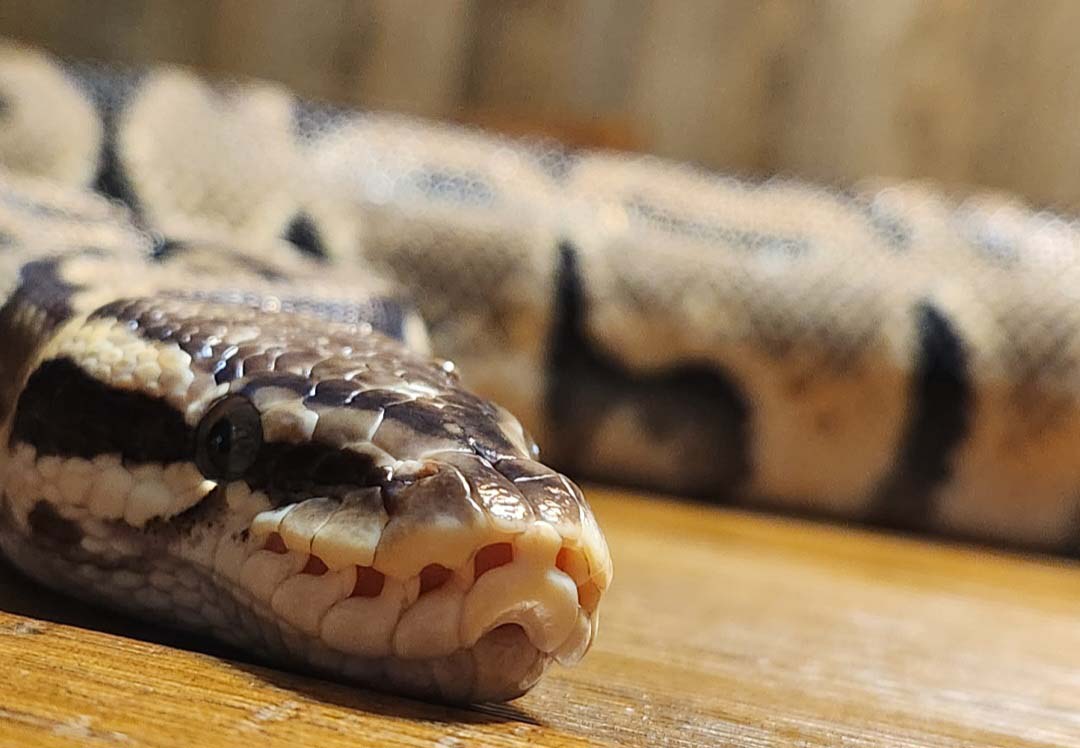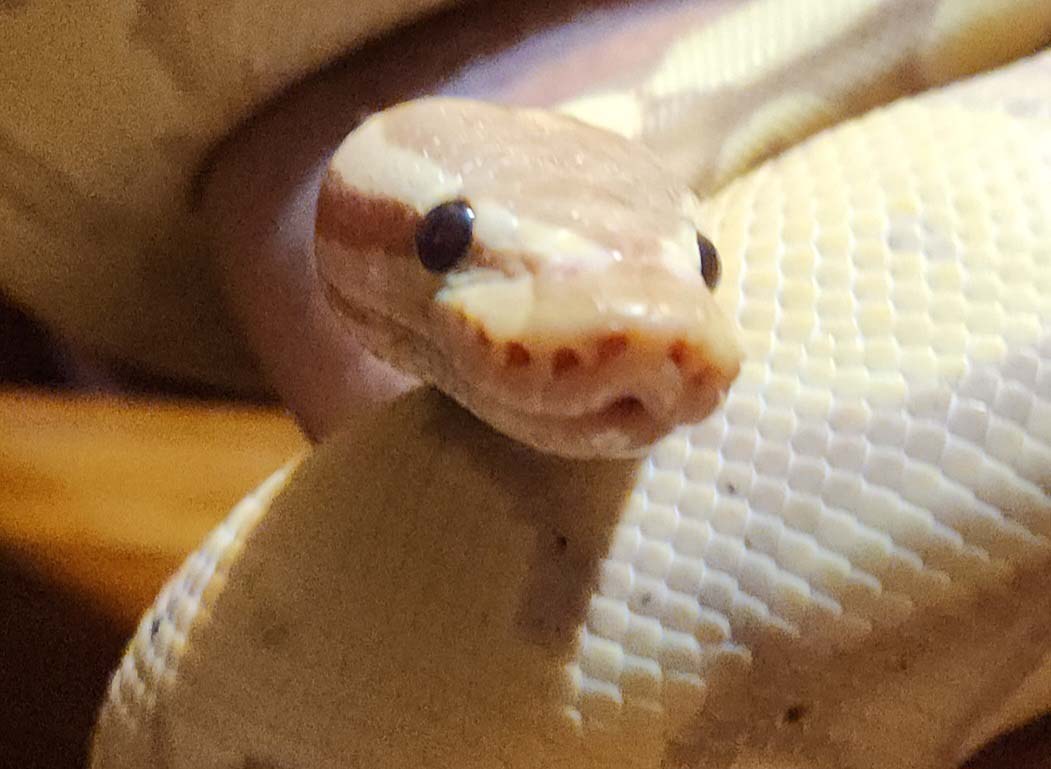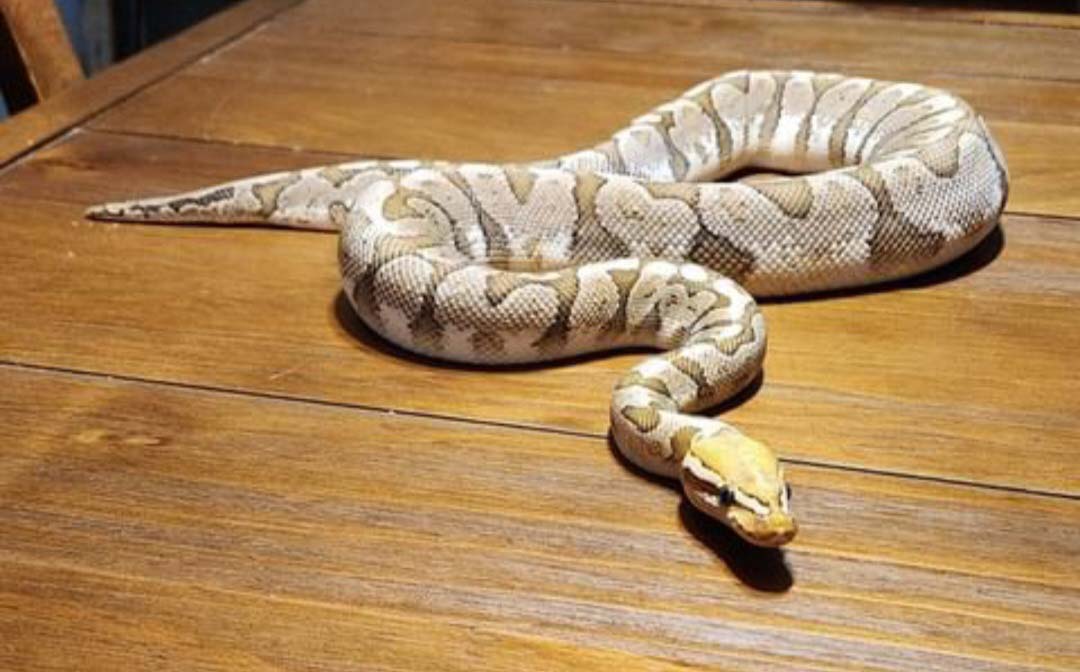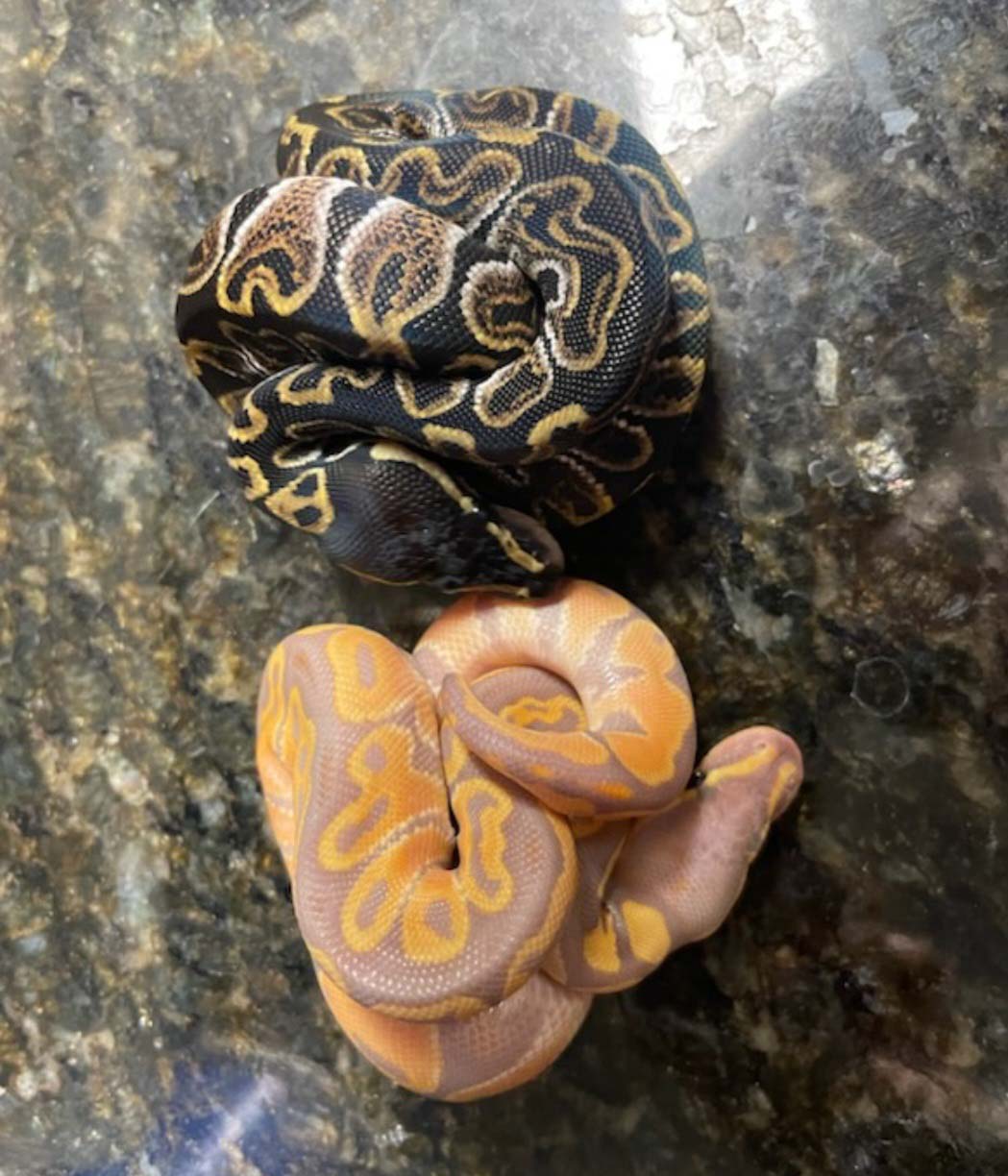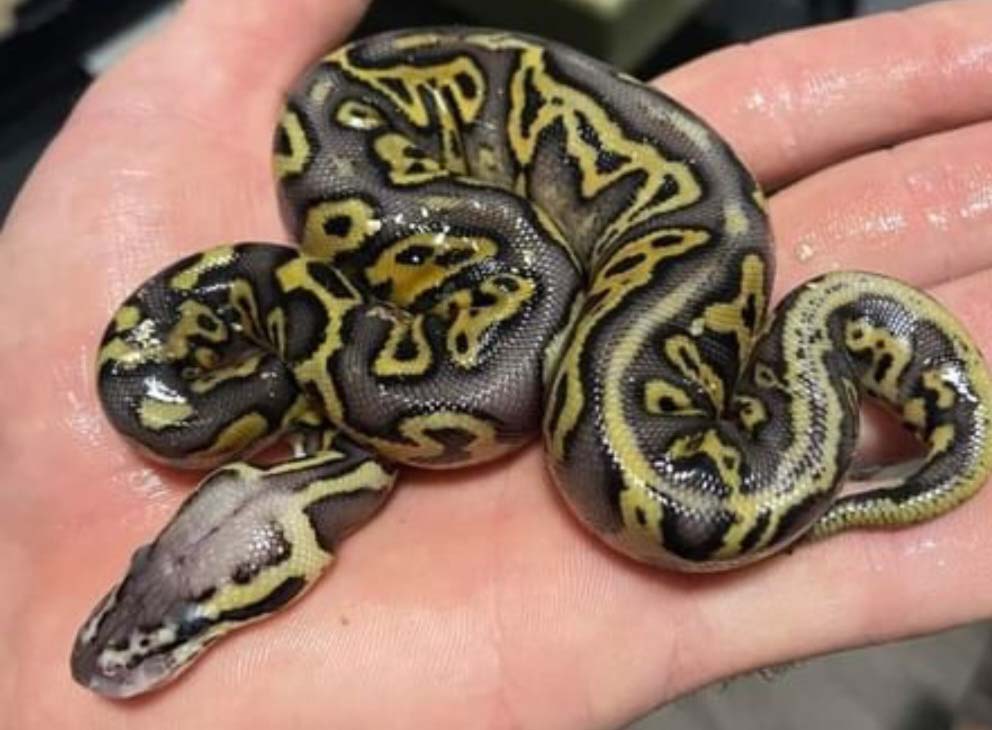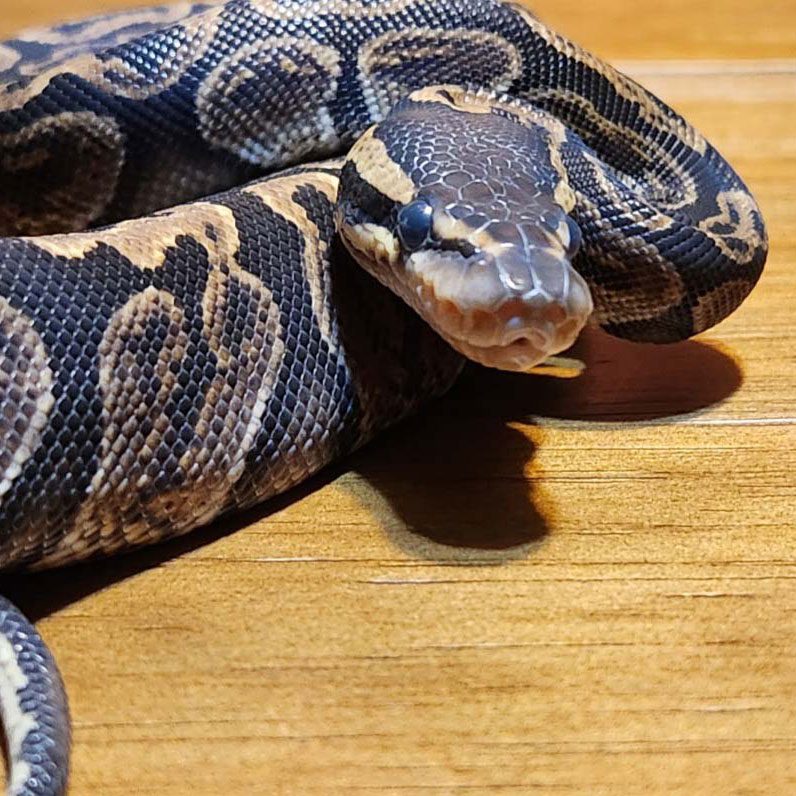
Wild ball pythons usually aren’t so lucky, but in captivity, ball pythons may live up to 50 years with proper care.

Ball pythons are sometimes called royal pythons.
This name arises from the belief that ancient royals once wore ball pythons as jewelry. Legend has it that Cleopatra often wore a ball python as a bracelet

Like fingerprints or snowflakes
Every ball python’s pattern is just a little different! Their coloring and patterns are meant to help them blend into their surroundings but there can be quite a bit of variation among individual snakes.

Thanks to a lot of dedicated and creative breeders
Ball pythons are now available in thousands of different color and pattern combinations. Some popular ball python morphs include spider, pastel, champagne, albino, clowns and pied. Too many to mention.


